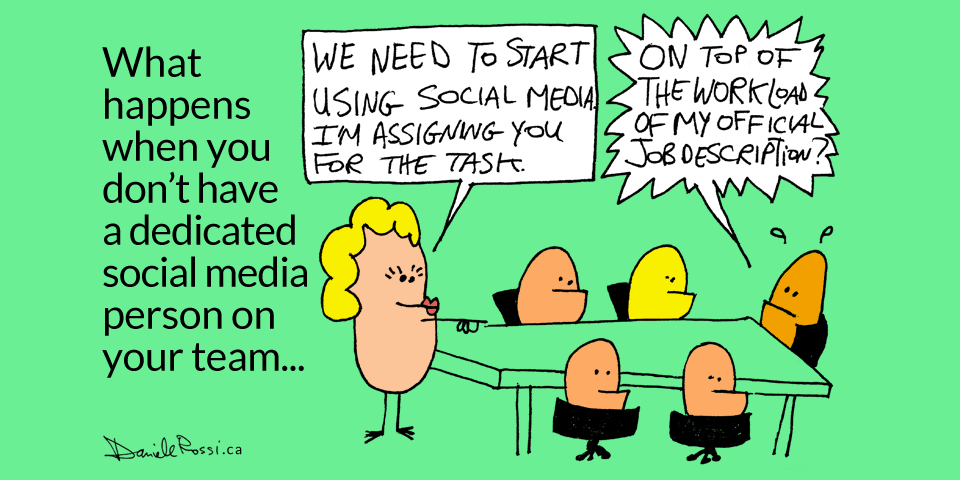Budgets are tight these days and some organizations just can’t afford the luxury of having a dedicated person or agency for running the social media accounts and strategy. What usually ends up happening is no social media accounts are created or if they have been created, they are an after thought to all the other communications work of an organization.
The consequences of not giving the social media accounts the focus include:
- If someone should ever say something bad about your brand, product or service, you won’t know about it and you won’t be able to defend yourself;
- You’d be missing out on improving your product or service. by engaging on social networks, you can learn directly from your customers (and those of your competitors) what kind of features your customers don’t care for and which features they do want;
- Those who do love your brand, product, or service will be more than happy to tell the world about it. Bingo! You have brand ambassadors who you could tap into. Especially if the stuff I talked about in the first bullet should happen.
- And many more reasons.
When someone at an organization has been tasked to take care of the social media account(s) on top of their official job duties (most likely only because they are prolific with their personal social media accounts), it’s their official job duties that will take priority. Next thing you know, yet another day has been skipped that anything had been posted.
And even when something does get posted, it’s usually not a piece of content that had any chance for strategic planning applied to it.
And analytics will definitely be low on the priority list. Either the tasked individual won’t know how to go about interpreting metrics or there just wan’t enough time.
I have a few tips if you’re the one tasked to take care of your organization’s social media account(s) and there just isn’t the time nor the budget to hire a full timer at the moment:
- Create a content calendar! Dedicate a certain amount of time per week or month to plan your content and posts. Do a Google search for any upcoming awareness weeks or conferences related to your industry. Are there any historical photos around you can post for #ThrowbackThursday (a.k.a. #tbt)? Perhaps you can feature an employee every month? The content possibilities are endless.
- Read up on the best ways to make your content compelling enough to rise above the noise of social networks and entice users to share. For instance this infographic by Copyblogger and these tips on storytelling.
- Use Buffer to schedule your postings to the times when your audience is most likely to see your content.
- Dedicate a day of the week to focus on analytics. Setting a goal will help you stick to it. There will be some weeks when you won’t be able to fulfil this goal. Perhaps you can switch days or skip the week entirely (after all, you’re being paid to do your official job). Try your best to keep analytics monitoring on a consistent basis.Keeping on top of analytics will allow you to learn a tremendous amount about your audience from their comments, who did the commenting and sharing, and how much traffic is going to your website (and where from). Google Analytics (which is free) and social networks provide other insight into your audience demographic. You’d definitely be the team star if you can regularly report on insight that can drive campaigns.
- Keep a record of who your regular sharers are and develop a relationship with them so they will be more likely to share your future posts.
- If your organization is using Twitter, create a Twitter list so you can categorize your engage followers from #5 as well as industry partners, industry colleagues, even employees. This will make it easier for you to see their tweets and engage with them (as well as retweeting). Hootsuite and Tweetdeck can be used to make this process easier. You can check throughout the day when you have a free moment.
All the above will make a compelling case to find the budget. Also, show the higher ups what the competition is doing (or not doing) and show samples of how other organizations in or outside of your industry have been benefitting from fully engaging on social networks.
Over to you! How do you manage your social media accounts when resources are tight?





